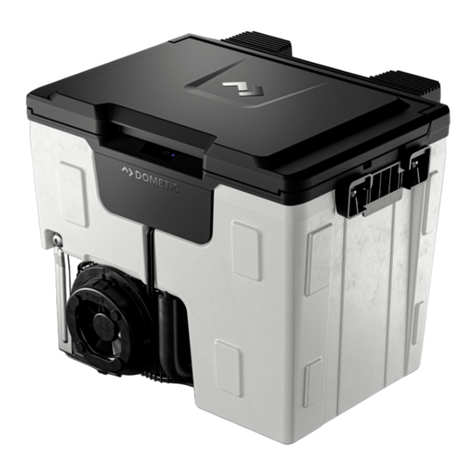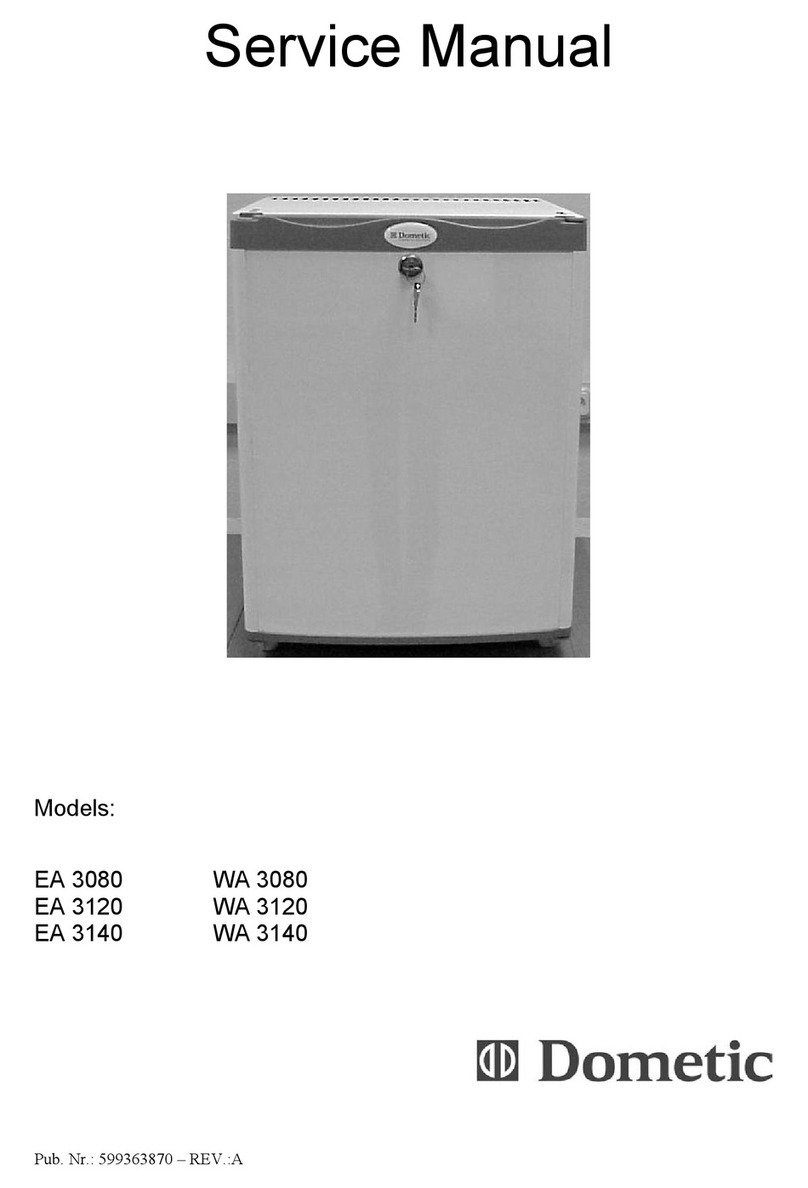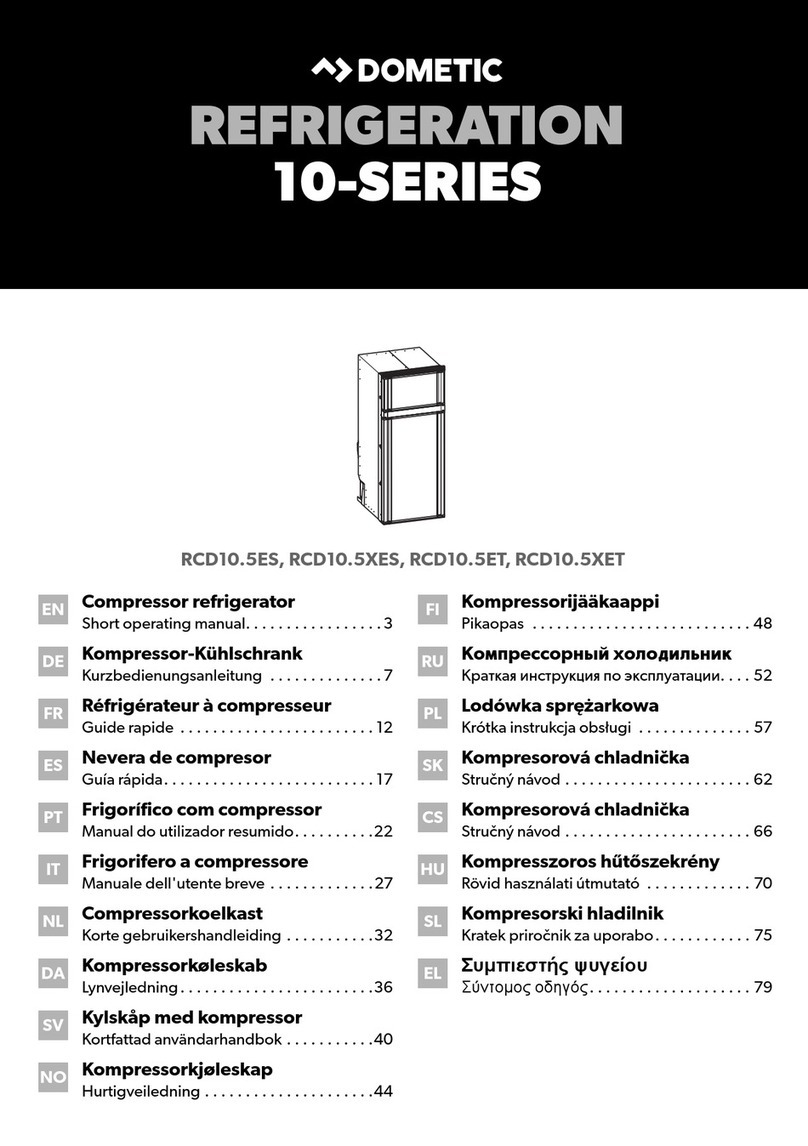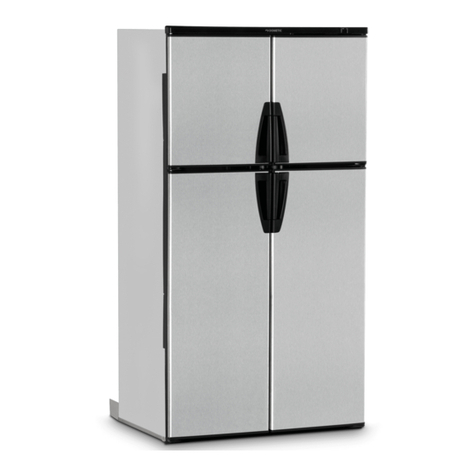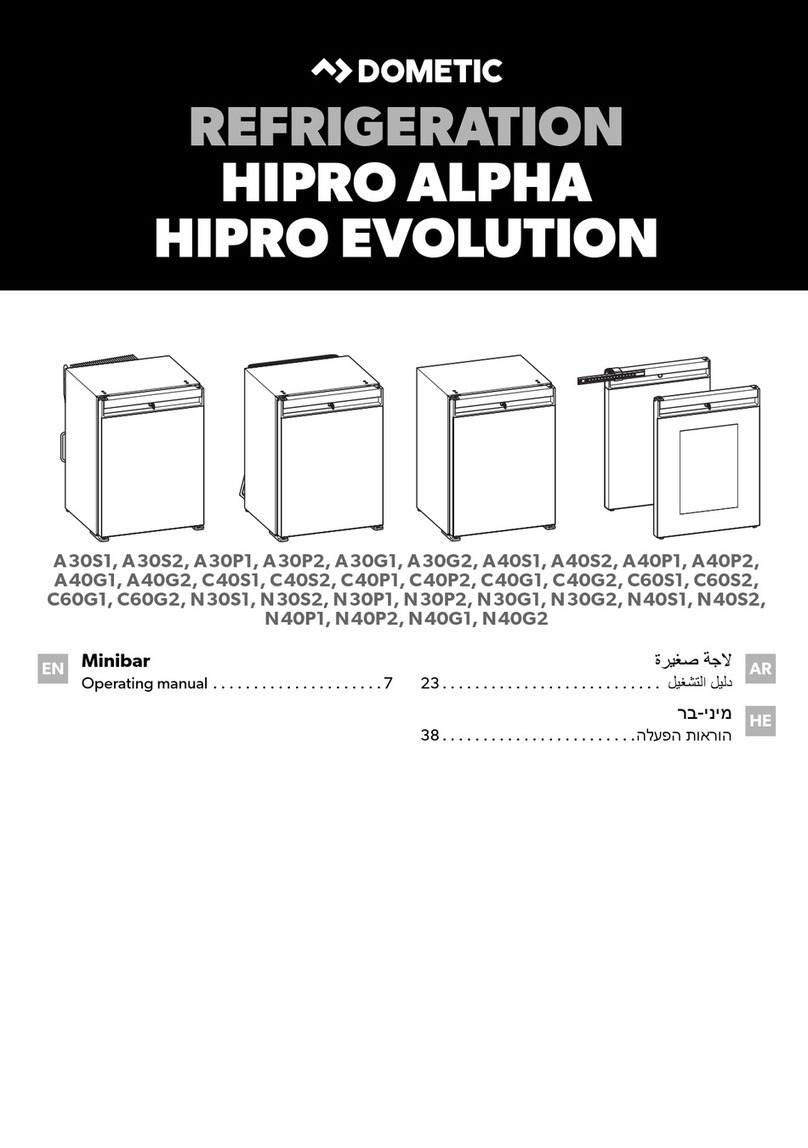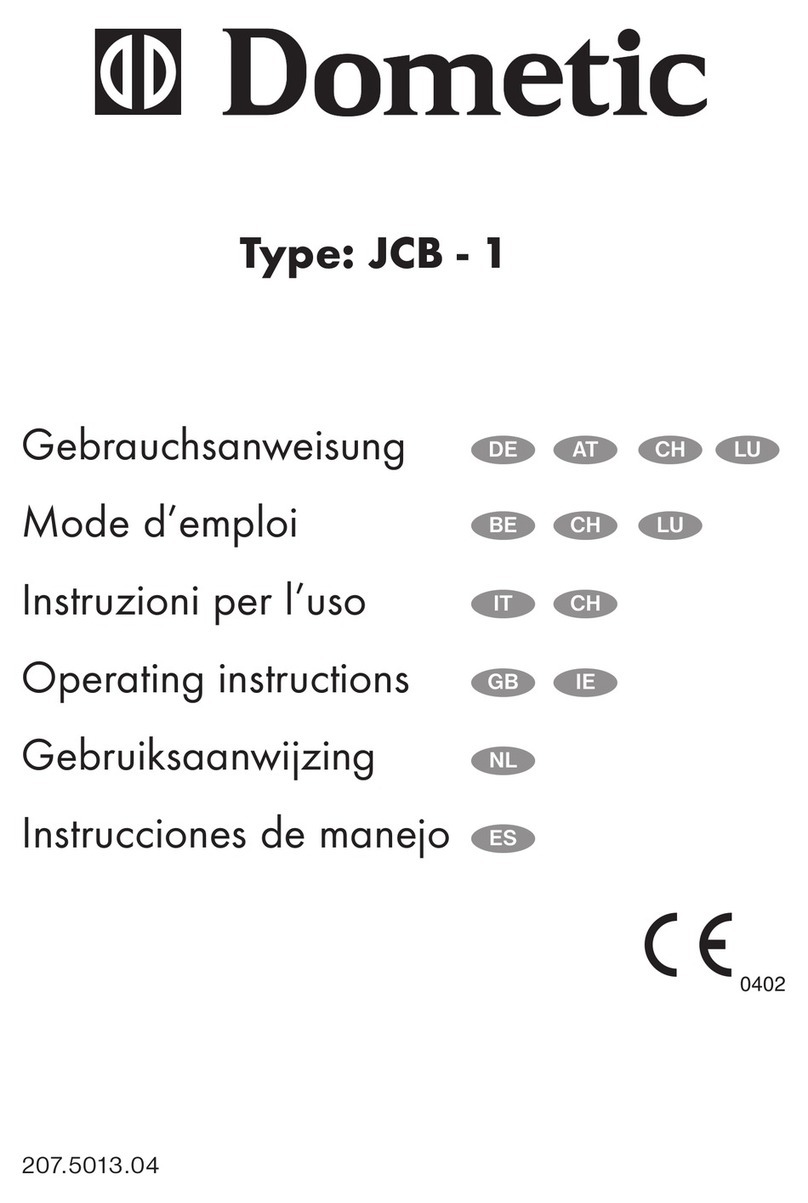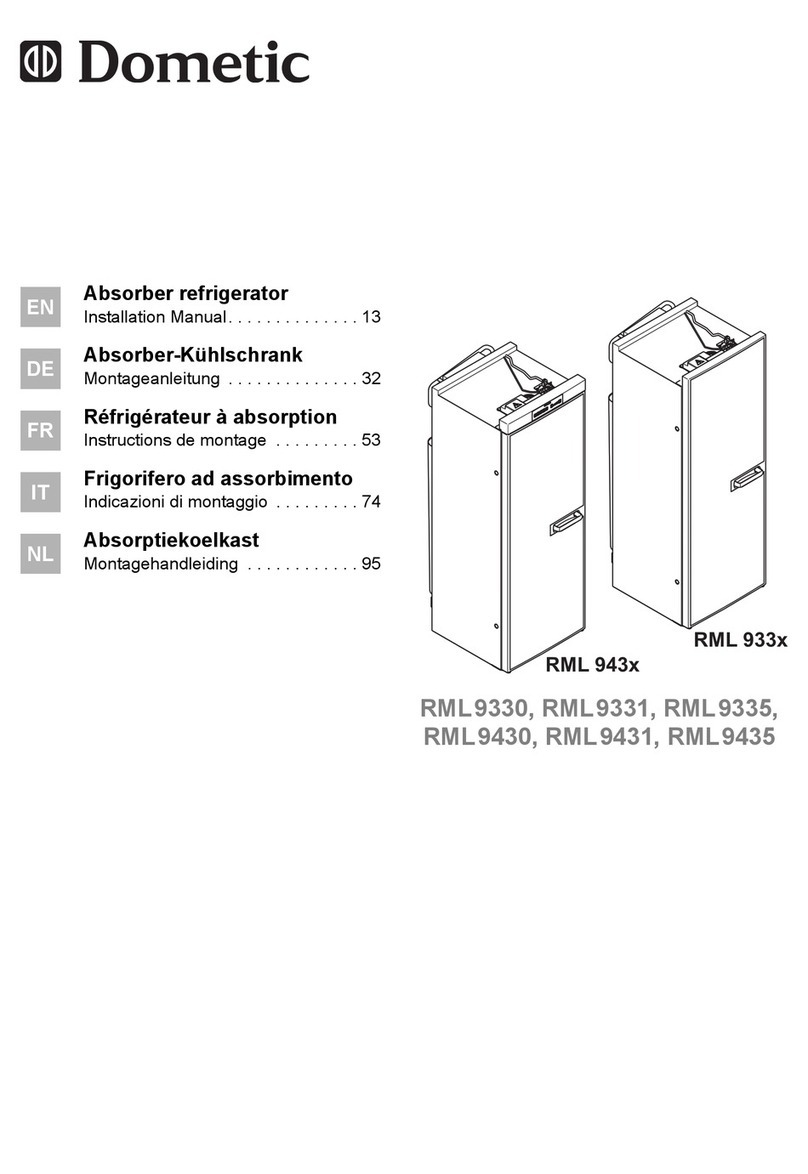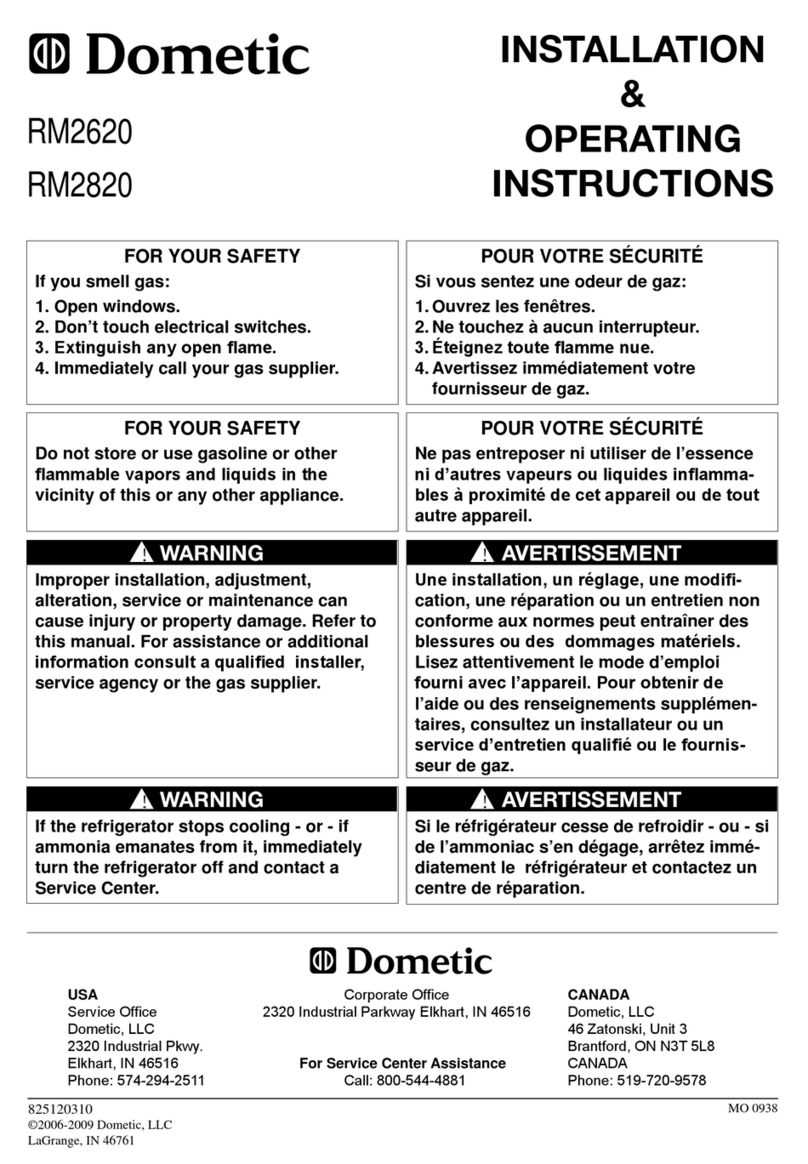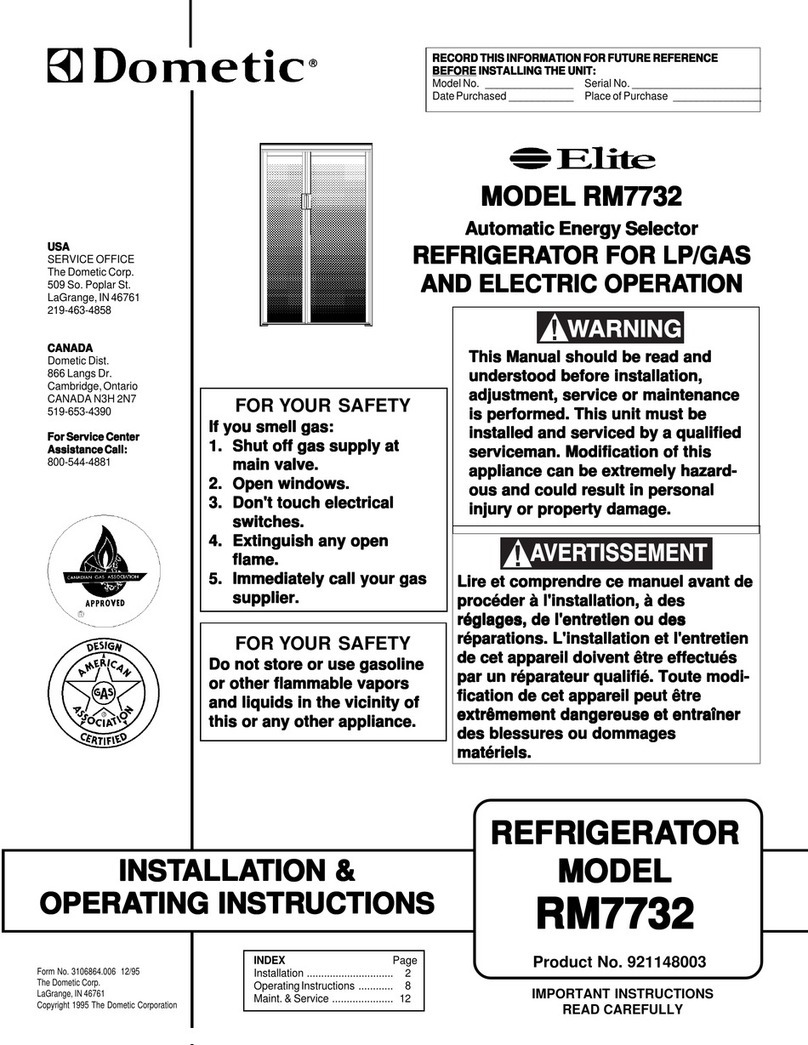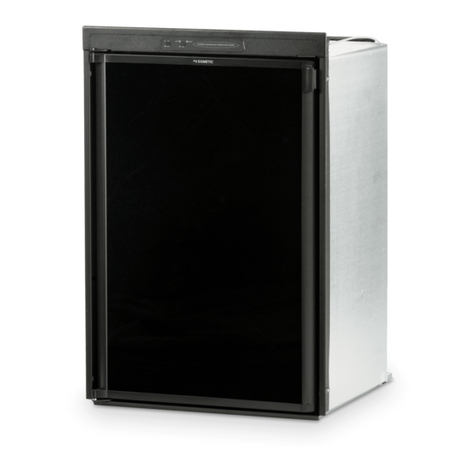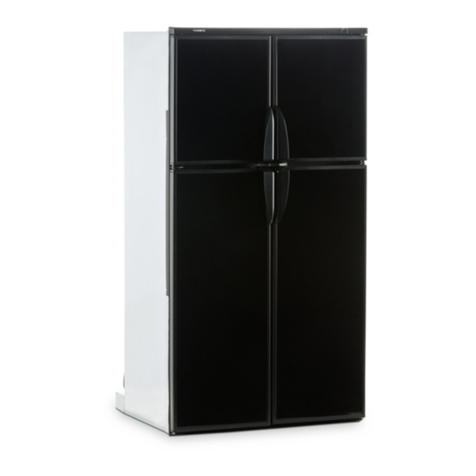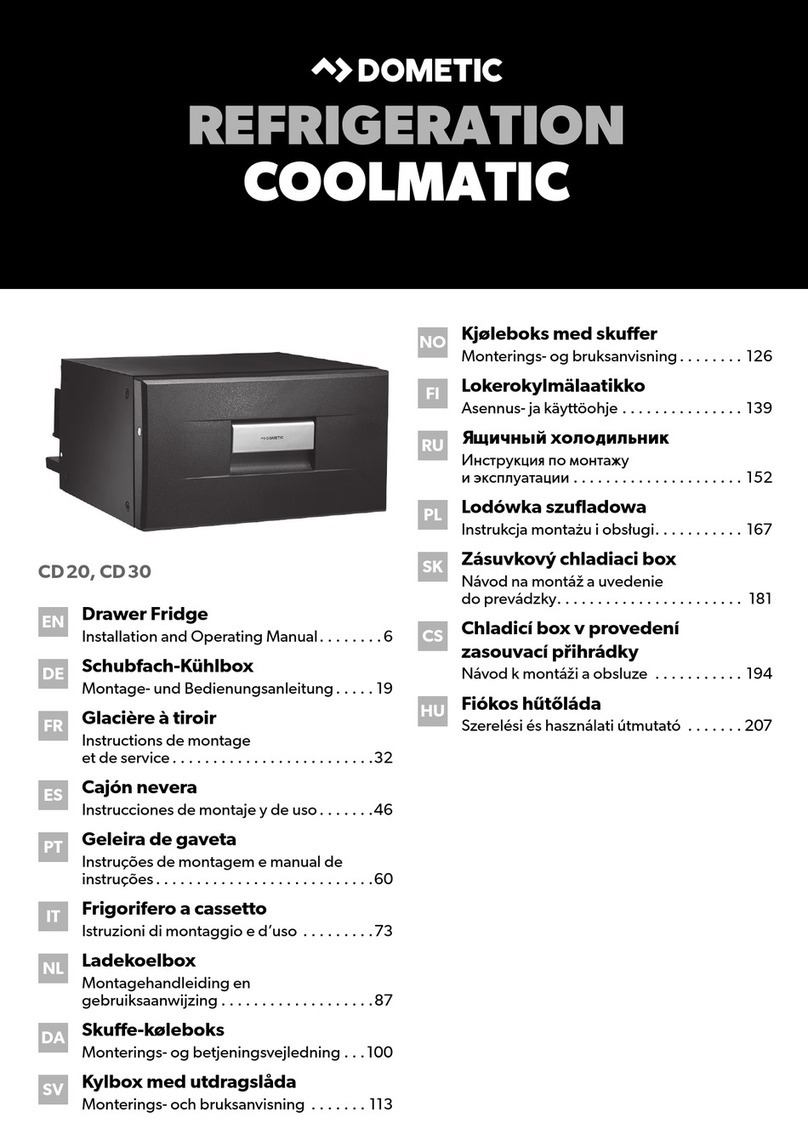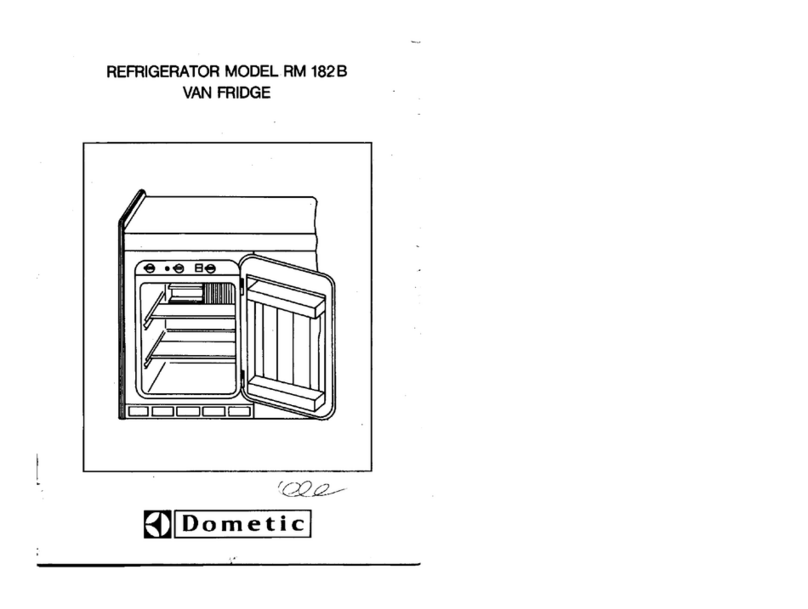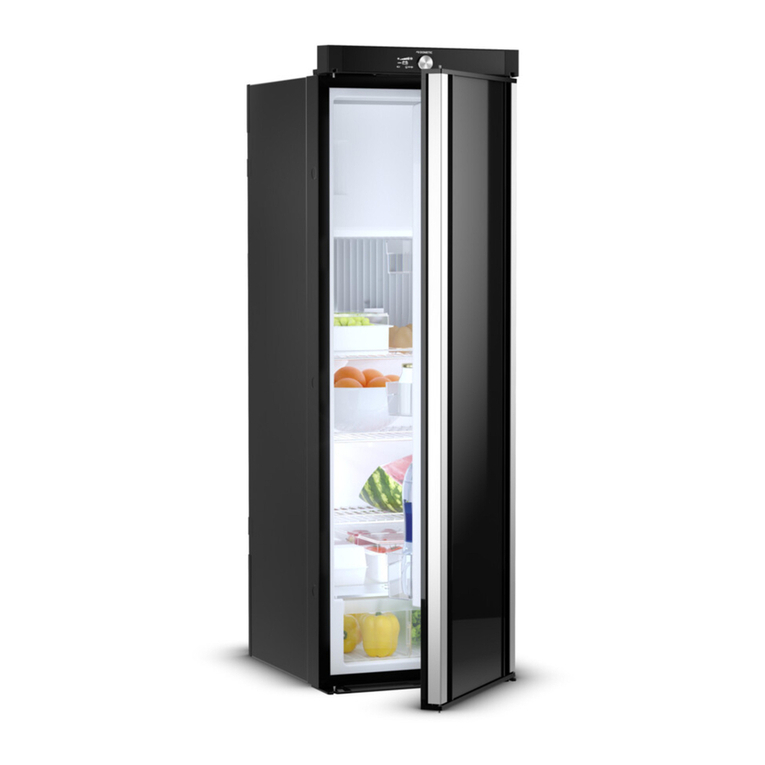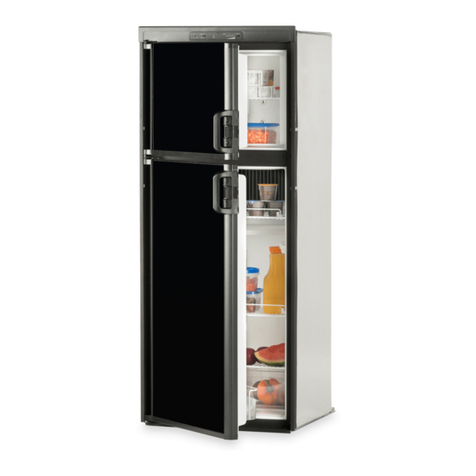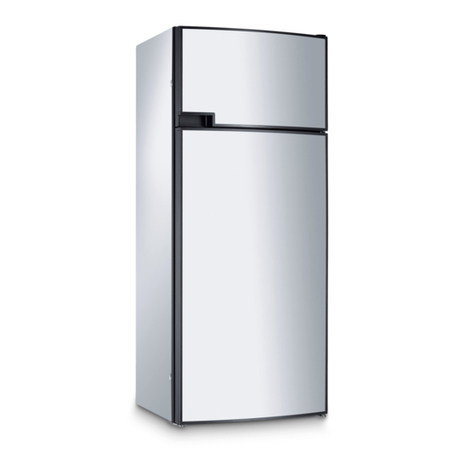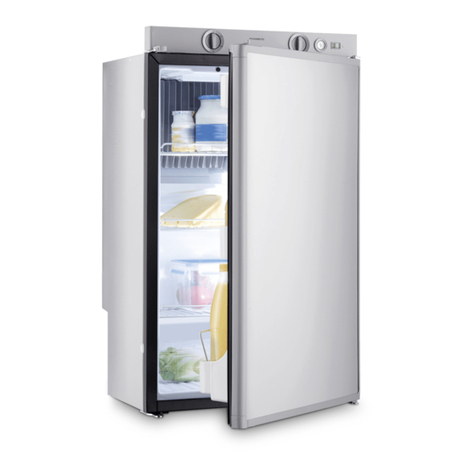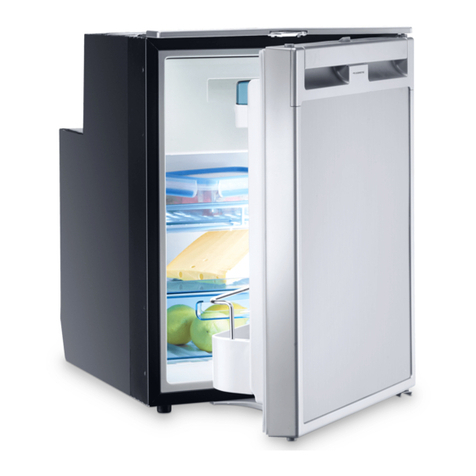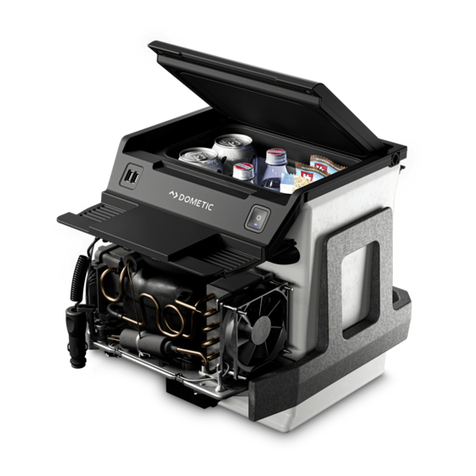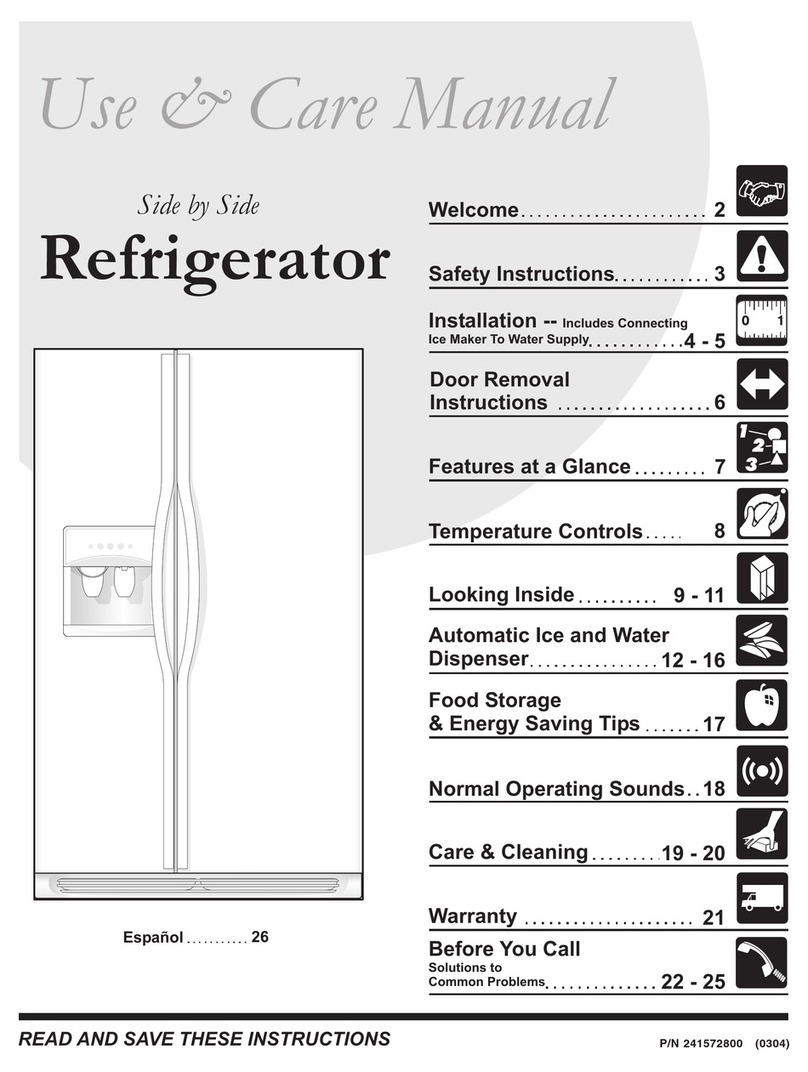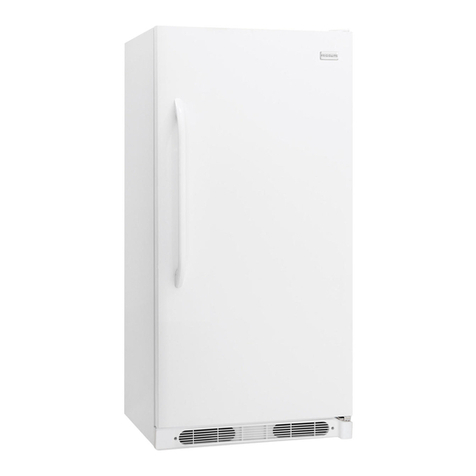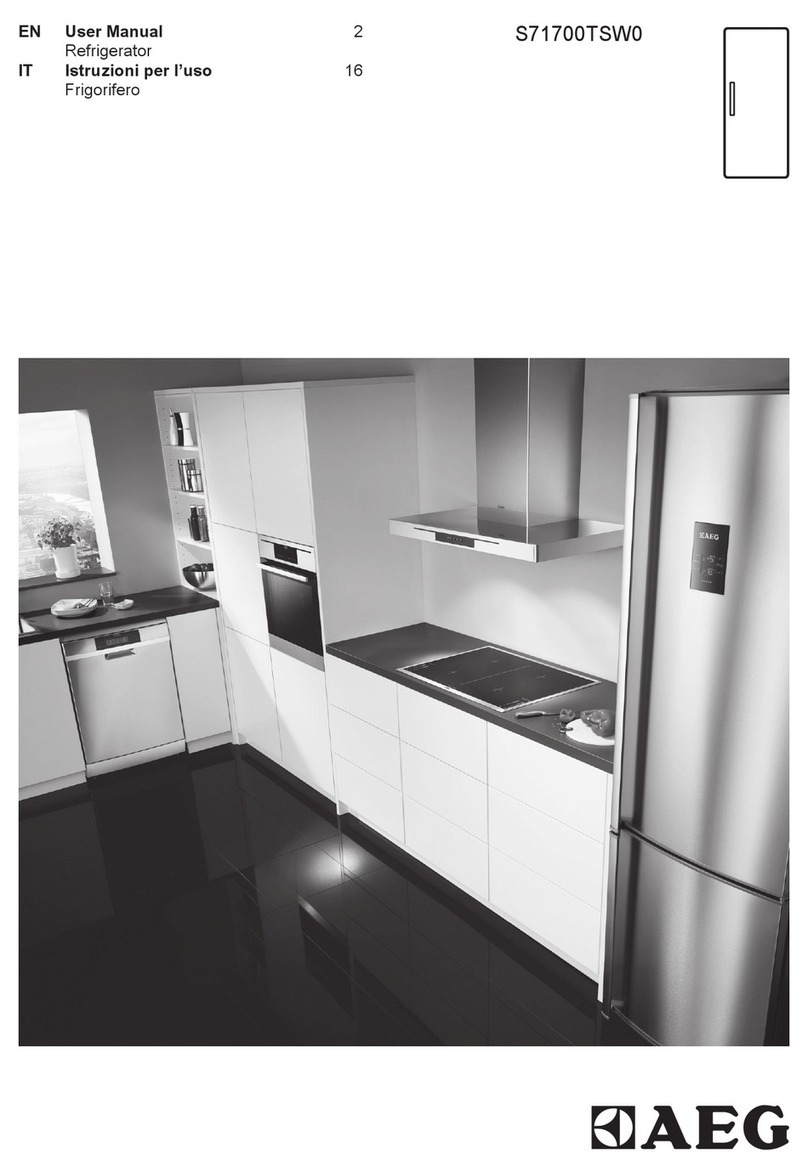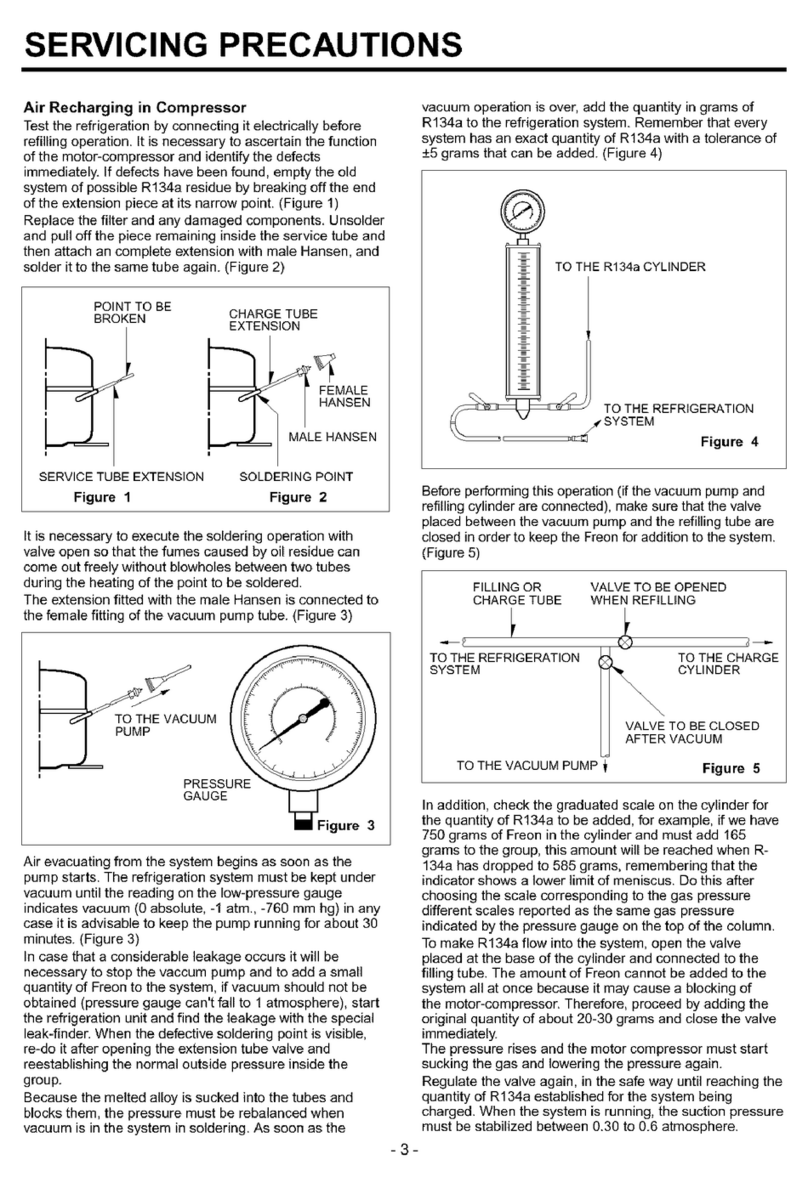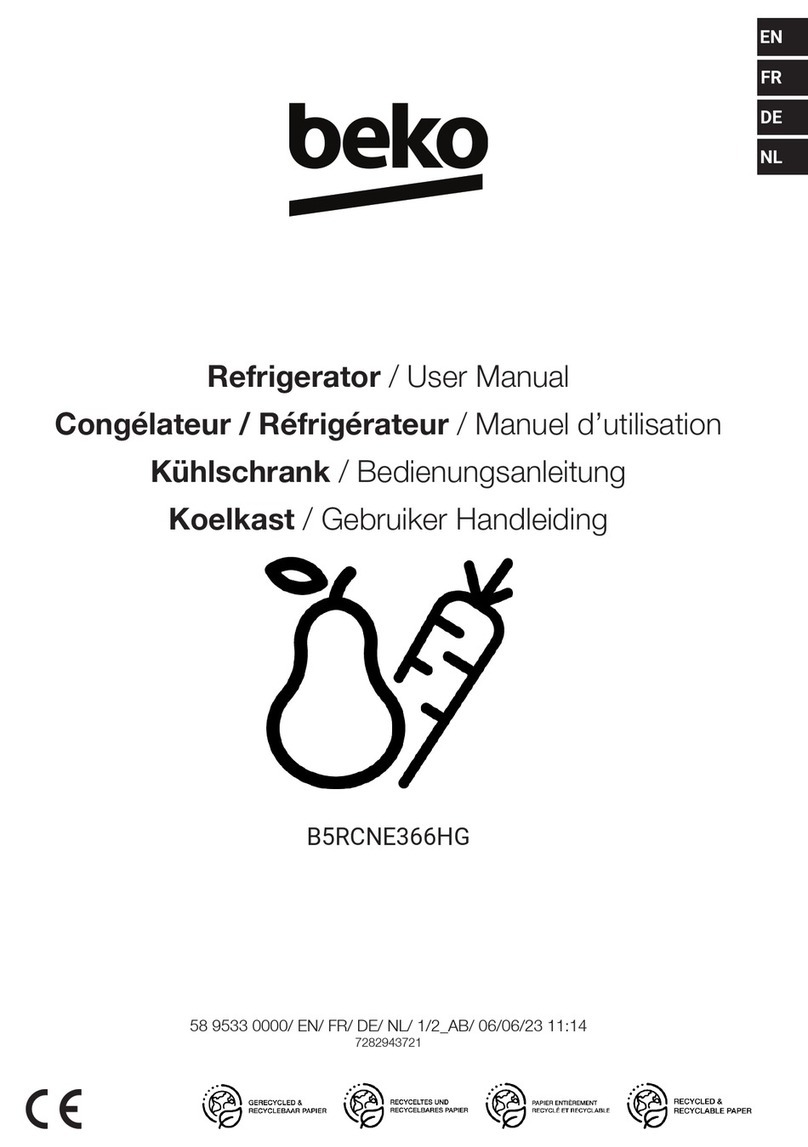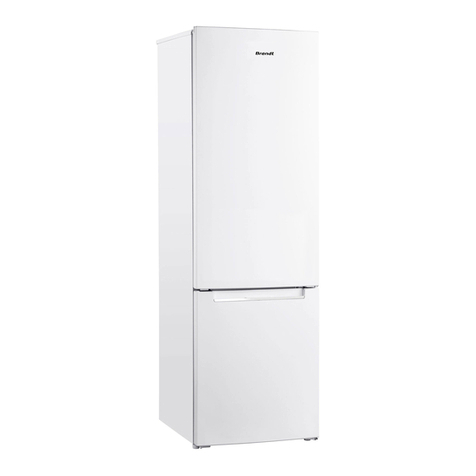
10
HOW TO USE THE REFRIGERATOR
FOOD STORAGE COMPARTMENT
Thefood storage compartmentis completely closed and
unventilated,which isnecessaryto maintain therequired
low temperature for food storage. Consequently, foods
having a strong odor or those that absorb odors easily
should be covered. Vegetables, salads etc. should be
covered to retain their crispness. The coldest positions
in the refrigerator are under the cooling fins and at the
bottom of the refrigerator. The warmer areas are on the
upper door shelves. This should be considered when
placing different types of food in the refrigerator.
When the refrigerator is heavily loaded, it will take a
longer time to lower the temperature; therefore, to get
maximum efficiency the refrigerator and food items
shouldbepre-cooledprior toloading.Theshelvesshould
not be covered with paper or plastic, and the food items
should be arranged so air can circulate freely.
Two door shelves are equipped with fingers. The fin-
gers are designed to prevent large containers (1/2-gal-
lon milk or juice) from shifting or spilling while traveling.
FROZEN FOOD STORAGE
COMPARTMENT
Quick frozen soft fruits and ice cream should be placed
in the coldest part of the compartment, which is on the
top freezer shelf. Frozen vegetables, may be stored in
any part of the compartment.
This compartment is not designed for deep or quick-
freezing of food. Meat or fish, whether raw or prepared,
can be stored in the frozen food storage compartment
providedthey arepre-cooledfirst intherefrigerator. They
canbe stored about threetimeslongerin the frozen food
compartment as compared to the fresh food compart-
ment. To prevent food from drying out, keep it in cov-
ered dishes, containers, plastic bags or wrapped in alu-
minum foil.
Total Refrigerated Volume 12 cu.ft.
ICE MAKING
Ice cubes can be made in the freezer compartment.
Forfaster icemaking,the traysshouldbe placedindirect
contact with the freezer shelves.
Ice will be made more rapidly if the thermostat is set at
its highest position.
It is a good idea to do this a few hours before the antici-
pated need for ice, but be sure to move the thermostat
back to normal setting, usually about mid setting when
the ice is formed. Food in the fresh food compartment
may be frozen if the setting is left on “COLDEST” posi-
tion.
DEFROSTING
Shutofftherefrigeratorby pressing the main power ON/
OFF button to the UP (OFF) position.
Empty the refrigerator, leaving the drip tray under the
finned evaporator, and the cabinet and freezer doors
open.Filling theicetrays withhotwater andplacingthem
on the freezer shelves can reduce defrosting time.
When all the frost has melted, dry the interior of the re-
frigeratorand freezer with a clean cloth.Replaceallfood
and set the thermostat to the COLDEST temperature
setting for a few hours. Then reset the thermostat to the
desired setting, usually at mid setting.
DO NOT use a hot air blower. Permanent damage
could result from warping the metal or plastic parts.
DO NOT use a knife or an ice pick, or other sharp
tools to remove frost from the freezer shelves. They
can create a leak in the ammonia system.
CLEANING
Cleaning the refrigerator is usually done after it is de-
frosted or put into storage. To clean the interior liner of
the refrigerator, use lukewarm weak soda solution. Use
onlywarm water to clean thefinnedevaporator,icetrays
andshelves.NEVER usestrongchemicals or abrasives
to clean these parts, as the protective surfaces will be
damaged. It is important to always keep the refrigerator
clean.
SHUT OFF - STORAGE PROCEDURE
Shut off the refrigerator by pressing the main power
ON/OFF button to the UP (OFF) position.
If the refrigerator will not be in operation for a period of
weeks,itshouldbeemptied,defrosted,cleanedandthe
doors left ajar. The ice trays should also be dried and
kept outside the cabinet.
! CAUTION
! WARNING
DO NOT store explosive substances in the refrig-
erator, such as cigarette lighter gas, gasoline, ether
or the like.
NOTE: Sodium chromate is used for corrosion protec-
tion (less than 2-weight % of the coolant).
CLIMATE CONTROL
During the summer months of high temperatures and
humidity,themetalframe between the freezer and fresh
food compartments may have water droplets forming.
The number of water droplets will increase if the vehicle
isn’t air conditioned during these months.
This refrigerator comes standard with a 12 volt (DC)
climatecontrolthat willevaporatethewaterdropletswhen
they form.
To have the climate control on, you position the switch
(“C” see figure 2) located beneath the top decoration
panel that houses the control panel to ON.
The climate control can be left on continuously or only
used when temperatures require it.
NOTE: The climate control will draw 12 volt DC power
continuouslywhen intheON position.Itshould beturned
OFF when a charging source is not available.

